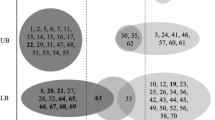Abstract
An exoskeleton is a device that helps the process of medical rehabilitation for people who have disorders in using their limbs. A low cost, effective sensor, control system, and an actuator are still the central issue in developing exoskeleton devices. This study aims to review an exoskeleton device, development, and recent technologies. The contribution of this study is that the paper can be used as a guideline to design an exoskeleton device. Specifically, the focus of this review discusses hand exoskeleton design. This review discusses three things, namely control signal, control mechanism, and exoskeleton actuator. In terms of the control signal, it addresses several techniques to control the exoskeleton by utilizing EMG, EEG, voice, and FSR (forced sensor) signals. In terms of control mechanism, several studies utilize pattern recognition based on machine learning and virtual reality to assist in using the exoskeleton. In terms of the actuator, the exoskeleton that was designed still has some shortcomings, namely weight and ergonomic design. The review results show that EMG signals are more often used in controlling exoskeleton devices. In the method section, pattern recognition using machine learning is still a significant part of the development of exoskeleton. In the actuator section, DC motors and linear actuators are more widely used than other types of motors. So, overall, the exoskeleton can still be improved from various aspects to make the subject more comfortable in use.
Access this chapter
Tax calculation will be finalised at checkout
Purchases are for personal use only
Similar content being viewed by others
References
Ho NSK, Tong KY, Hu XL, Fung KL, Wei XJ, Rong W et al (2011) An EMG-driven exoskeleton hand robotic training device on chronic stroke subjects: task training system for stroke rehabilitation. In: IEEE international conference on rehabilitation robotics, p 1–5. IEEE
Takahashi CD, Der-Yeghiaian L, Le V, Motiwala RR, Cramer SC (2008) Robot-based hand motor therapy after stroke. Brain 131(2):425–437
Feys H, De Weerdt W, Verbeke G, Steck GC, Capiau C, Kiekens C et al (2004) Early and repetitive stimulation of the arm can substantially improve the long-term outcome after stroke: a 5-year follow-up study of a randomized trial. Stroke 35(4):924–929
Johnson W, Onuma O, Owolabi M, Sachdev S (2019) WHO Stroke a global response is needed. In: Bulletin of the World Health Organization, p 633–708
Patton J, Small SL, Zev Rymer W (2008) Functional restoration for the stroke survivor: informing the efforts of engineers. Top Stroke Rehabil 15(6):521–541
Li M, He B, Liang Z, Zhao C, Chen J, Zhuo Y (2019) An attention-controlled hand exoskeleton for the rehabilitation of finger extension and flexion using a rigid-soft combined mechanism. Front Neurorobot 13(May):0–13
Diez JA, Blanco A, Catalán JM, Badesa FJ, Lledó LD, Garcia-Aracil N (2018) Hand exoskeleton for rehabilitation therapies with integrated optical force sensor. Adv Mech Eng 10(2):1–11
Triwiyanto T, Pawana IPA, Irianto BG, Indrato TB, Wisana IDGH (2019) Embedded system for upper-limb exoskeleton based on electromyography control. Telkomnika (Telecommunication Comput Electron Control) 17(6):2992–3002
Triwiyanto, Wahyunggoro O, Nugroho HA, Herianto (2016) String actuated upper limb exoskeleton based on surface electromyography control. In: Proceedings of 6th international annual engineering seminar (InaES), pp 176–181
Lu Z, Tong K, Shin H, Li S, Zhou P (2017) Advanced myoelectric control for robotic hand-assisted training: outcome from a stroke patient. Front Neurol 8(March):107
Gearhart CJ, Varone B, Stella MH, Busha BF, Member S (2016) An effective 3-fingered augmenting exoskeleton for the human hand. In: 38th Annual international conference of the IEEE engineering in medicine and biology society (EMBC), p 590–593. IEEE
Kiguchi K, Hayashi Y (2012) An EMG-based control for an upper-limb. IEEE Trans Syst Man, Cybern Part B 42(4):1064–1071
Wang X, Tran P, Callahan SM, Wolf SL, Desai JP (2019) Towards the development of a voice-controlled exoskeleton system for restoring hand function. In: 2019 International symposium on medical robotics ISMR 1, pp 1–7
Oppus CM, Prado JRR, Marinas AG, Reyes RSJ, Escobar JC, Mariñas JAG et al (2016) Brain-computer interface and voice-controlled 3d printed prosthetic hand. In: IEEE region 10 conference (TENCON), p 2689–2693. IEEE
Kandalaft N, Kalidindi PS, Narra S, Saha HN (2018) Robotic arm using voice and Gesture recognition. 2018 9th annual IEEE information technology; electronics and mobile communication conference, pp 1060–1064
Badesa FJ, Blanco A, Garcı N, Lledo LD, Diez JA, Blanco A et al (2018) Hand exoskeleton for rehabilitation therapies with integrated optical force sensor. Adv Mech Eng 10(2):1687814017753881
Leonardis D, Barsotti M, Loconsole C, Solazzi M, Troncossi M, Mazzotti C et al (2015) An EMG-controlled robotic hand exoskeleton for bilateral rehabilitation. IEEE Trans Haptics 1412(c):1–12
Fajardo J, Lemus A, Rohmer E (2015) Galileo bionic hand: sEMG activated approaches for a multifunction upper-limb prosthetic. In: IEEE thirty fifth central american and panama convention (CONCAPAN XXXV), p 1–6. IEEE
Witkowski M, Cortese M, Cempini M, Mellinger J, Vitiello N, Soekadar SR (2014) Enhancing brain-machine interface (BMI) control of a hand exoskeleton using electrooculography (EOG). J Neuroeng Rehabil 11(1):1–6
Triwiyanto T, Wahyunggoro O, Nugroho HA, Herianto H (2018) Muscle fatigue compensation of the electromyography signal for elbow joint angle estimation using adaptive feature. Comput Electr Eng Oct 71(July):284–293
Triwiyanto T, Wahyunggoro O, Nugroho HA, Herianto H (2016) DWT analysis of sEMG for muscle fatigue assessment of dynamic motion flexion-extension of elbow joint. In: 8th International conference on information technology and electrical engineering (ICITEE) [Internet], p 1–6. IEEE Conference Publications, Yogyakarta
Author information
Authors and Affiliations
Corresponding author
Editor information
Editors and Affiliations
Rights and permissions
Copyright information
© 2021 The Author(s), under exclusive license to Springer Nature Singapore Pte Ltd.
About this paper
Cite this paper
Triwiyanto, T. et al. (2021). A Review on Robotic Hand Exoskeleton Devices: State-of-the-Art Method. In: Triwiyanto, Nugroho, H.A., Rizal, A., Caesarendra, W. (eds) Proceedings of the 1st International Conference on Electronics, Biomedical Engineering, and Health Informatics. Lecture Notes in Electrical Engineering, vol 746. Springer, Singapore. https://doi.org/10.1007/978-981-33-6926-9_28
Download citation
DOI: https://doi.org/10.1007/978-981-33-6926-9_28
Published:
Publisher Name: Springer, Singapore
Print ISBN: 978-981-33-6925-2
Online ISBN: 978-981-33-6926-9
eBook Packages: EngineeringEngineering (R0)




